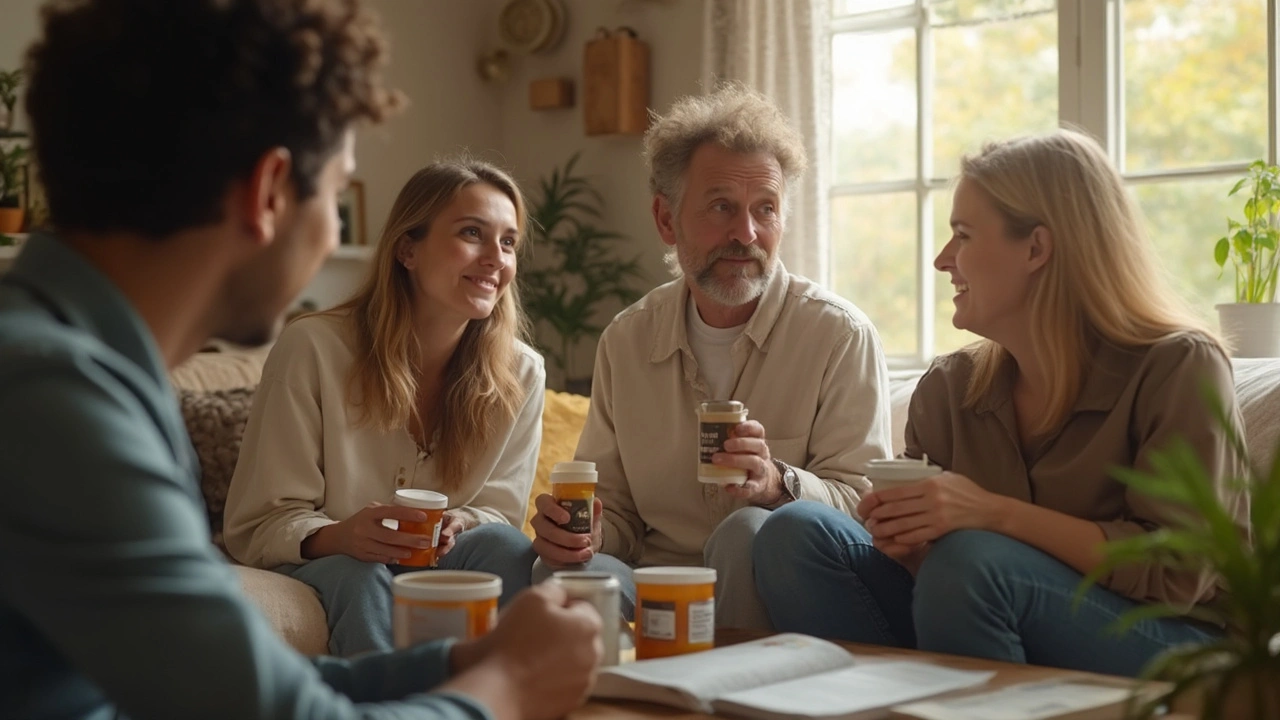Feeling jittery, sweaty, or stuck in a worry loop? You’re not alone, and you don’t have to live with it. Anxiety shows up in many ways, but the good news is there are real, proven ways to calm it down. Below you’ll find the most common medication options, talk therapies that actually shift thinking, and natural steps you can add to your daily routine.
First up, medication. Doctors often prescribe SSRIs like sertraline or escitalopram as a starting point. They balance brain chemicals and usually take a few weeks to kick in. If you need faster relief, benzodiazepines such as lorazepam can be prescribed for short‑term use, but they’re habit‑forming, so they’re not a long‑term solution. Talk to your pharmacist about side effects and what to watch for; a quick chat can save you a lot of guesswork.
Cognitive‑behavioral therapy (CBT) is the gold‑standard talk therapy for anxiety. In just 8‑12 sessions, a therapist helps you spot irrational thoughts and replace them with realistic ones. Exposure therapy works especially well for phobias—gradually facing the fear in a safe setting lowers the panic response over time. If you’re on a budget, many online platforms now offer CBT modules at a fraction of traditional fees.
Group therapy can also be a game‑changer. Sharing stories with people who get it reduces the isolation factor and gives you practical coping tricks you haven’t tried yet. Look for local meet‑ups or virtual support groups; the shared experience often speeds up progress.
While meds and therapy tackle the core issue, lifestyle tweaks can smooth the edges. Regular exercise—whether it’s a brisk walk, cycling, or yoga—releases endorphins that naturally calm the nervous system. Aim for at least 30 minutes most days; you’ll notice mood lifts within weeks.
Nutrition matters too. Foods rich in magnesium (nuts, leafy greens) and omega‑3s (salmon, flaxseed) support brain health. Cutting back on caffeine and sugar can prevent the jitters that make anxiety feel worse. If you like supplements, studies show that a daily dose of magnesium or a high‑quality probiotic may reduce anxiety symptoms.
Mind‑body practices are low‑cost and easy to start. A 5‑minute breathing exercise—inhale for four seconds, hold for four, exhale for six—activates the parasympathetic nervous system and drops heart rate fast. Journaling for a few minutes each night helps unload racing thoughts before bed, improving sleep quality, which in turn lowers anxiety.
Finally, set realistic expectations. Progress isn’t a straight line; you’ll have good days and setbacks. Tracking your symptoms in a simple notebook or app can show patterns you didn’t notice and give you data to discuss with your doctor.
When you combine the right medication, evidence‑based therapy, and daily habits that support calm, anxiety becomes manageable instead of overwhelming. Use the resources on Pharma Central to learn more about specific drugs, find therapist directories, and explore deeper guides on natural supplements. Take the first step today—pick one tip, try it for a week, and notice the difference.

Are you curious about Zoloft, the popular antidepressant? This article unpacks how Zoloft works for anxiety and depression, side effects, what science says, important tips for anyone considering it, and answers to common questions. It gives a real-talk view on how Zoloft fits into daily life, handling both the benefits and challenges. Whether you're thinking about asking your doctor or already have a prescription, you'll find useful info and relatable examples here.
read more